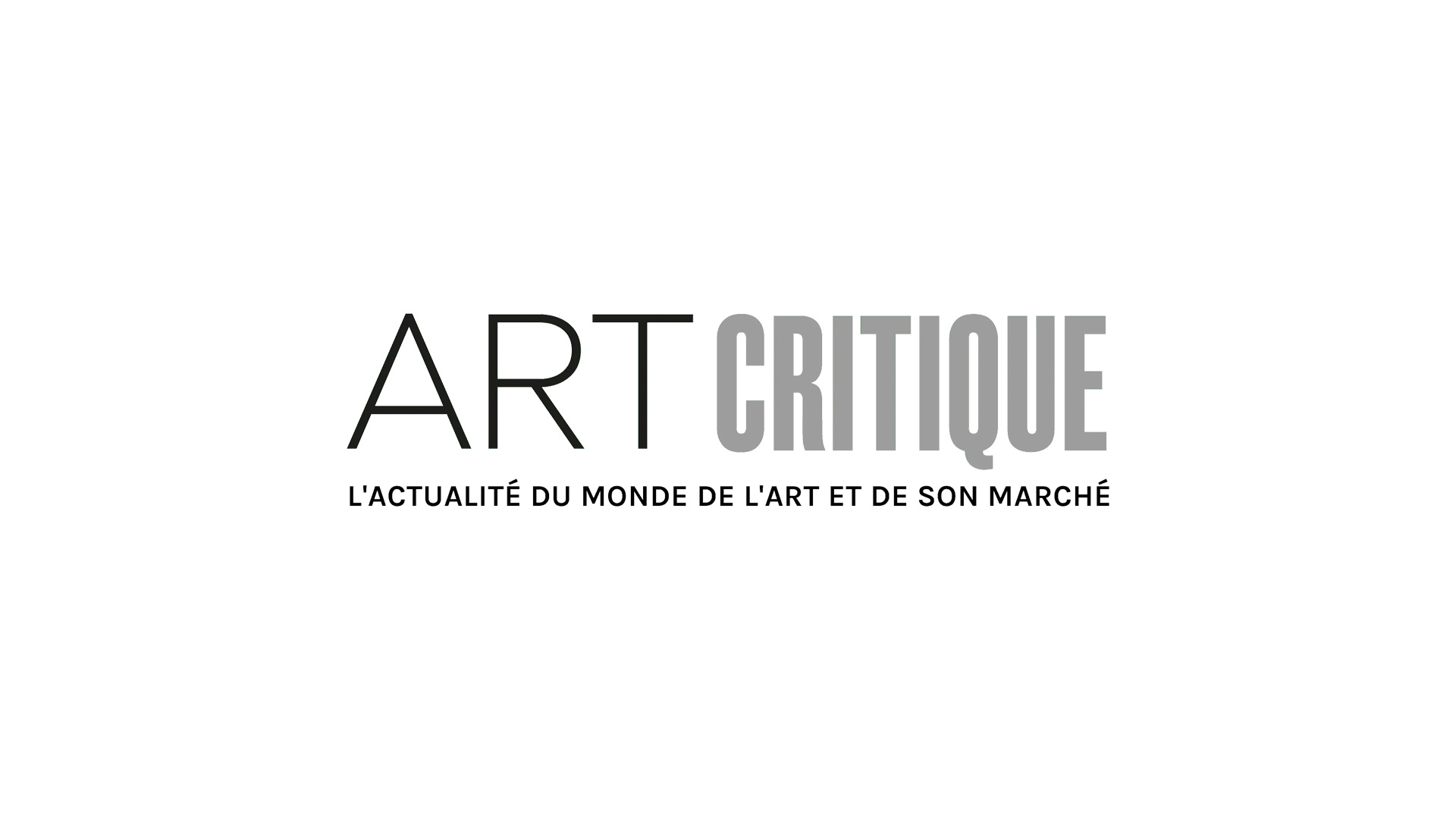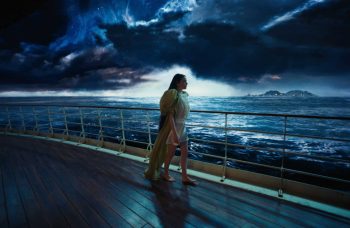One half of one of the world’s most iconic cinematic duos, Joel Coen has dipped his toes deep into the depths of theatre with his solo directorial debut, and it is as engrossing as one would get. Tackling none other than Shakespeare’s cursed King of Scotland, The Tragedy of Macbeth is a true-to-source adaptation, but it takes the viewer somewhere far stranger than a bloodied Scotland. Another instant classic for the young industry titan of A24, it is a dark and isolating take on the political calamity that rests in a swirling limbo of consequence.
Certainly, the most striking element of The Tragedy of Macbeth from the get-go is its visuals. Its use of black and white filming and a 1:37:1 aspect ratio immediately provides a way to give an aged feeling to the world we’re witnessing, as well as enhance the textures that stand in for the detail of colour and strengthen the unease that builds throughout the story. Severe lines create intense geometric shapes of light and shadow on a massive scale, lending an art deco essence to the brooding aesthetic.
Paramount though in this visual context—and deeply ingrained in the themes explored—is the use of liminal space. The vast majority of locations used for scenes are transitory and empty—hallways, roads, forests—and are even further secluded away by virtue of a sea of mist and smoke that cloaks everything. It gives an intense feeling of separation from the characters and their world, heightening their insular spirals. Not only is it an immediate visual keystone for the eye to latch onto, it’s a way to strip the literal world away and highlight the doomed scenario as it plays out for Macbeth.

Denzel Washington leads the cast in a disquietingly calm performance of Macbeth, an energy that is matched by Frances McDormand in her portrayal of Lady Macbeth. There is a quiet conniving to their machinations, a carefulness that doesn’t delve into the more impassioned emotions oft exhibited in performances of the play; it’s a wise lean into the trappings of the medium that differentiates it from a filmed theatre experience. But by no means would one call this a naturalist performance—the level-headedness maintained by both of these characters deep into their schemes has surreal energy all its own, and it makes the eventual breaks of each character all the more gripping. McDormand’s manic terrors haunt, and Washington’s unhinged rage bubbles over everything as his world begins to fall apart.
Corey Hawkins plays the perfect counterpart to Washington in his portrayal of the tortured hero Macduff. The tender injury he exhibits on the news of his slain family serves to ground the final act beautifully, and even in his early conversational suspicions of the would-be king, Hawkins shows a subtle attentiveness that hones in on the quick descent of Macbeth. On the opposite end of the spectrum, Kathryn Hunter’s all-encompassing Weird Sisters digs boldly into the supernatural that lay at the heart of the story. She is all at once charming and disturbing, brimming with truly dark energy that rests neatly behind a twisting, smiling veneer (not to mention the breathtaking ways her form is represented through visual effects). Hunter brings the perfect gravitas to easily the most important character(s) of the sordid tale.

So many moments of the play are represented here with the full strength of the cinematic medium. The knocking, symbolic of the arrival of Macbeth’s reckoning in the form of Macduff and a historically valued event a la 19th-century author Thomas De Quincey, is intense and foreboding in the sound design, its arrival, departure, then arrival serving as a powerful representation of Macbeth’s first cracks. The transition from Macbeth’s meeting with King Duncan to Lady Macbeth’s reading of her husband’s letter is seamless and gorgeous, exemplifying the visionary use of light and shape in the film. And, without any hyperbole, the greatest interpretation of the fight between Macbeth and the nameless swordsman is seen in this film; the choreography of the fearlessly unarmed king and the swift destruction he delivers is unparalleled in showing Macbeth’s power before he falls.
The Tragedy of Macbeth is a feat of cinematic vision from Joel Coen. Every detail hums with intent, breathing life into this strange, dark plane he has brought the classic Shakespearean tragedy into. From the engrossing performances of a classically trained cast to the staggeringly grand and isolating feelings evoked by the design, it is simply not to be missed. Without a doubt, Coen’s solo directorial debut will be remembered as a feat of cinematic strength and one of the strongest showings of theatrical legacy.





